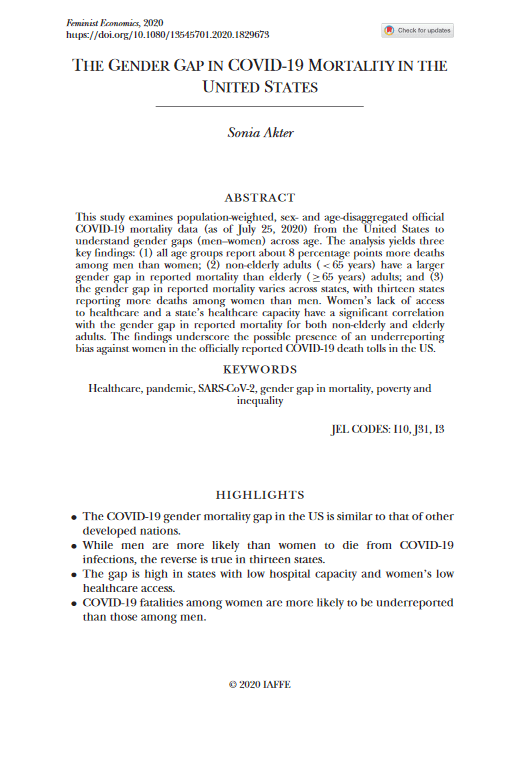This study examines population-weighted, sex- and age-disaggregated official COVID-19 mortality data (as of July 25, 2020) from the United States to understand gender gaps (men–women) across age. The analysis yields three key findings: (1) all age groups report about 8 percentage points more deaths among men than women; (2) non-elderly adults (<65 years) have a larger gender gap in reported mortality than elderly (≥65 years) adults; and (3) the gender gap in reported mortality varies across states, with thirteen states reporting more deaths among women than men. Women’s lack of access to healthcare and a state’s healthcare capacity have a significant correlation with the gender gap in reported mortality for both non-elderly and elderly adults. The findings underscore the possible presence of an underreporting bias against women in the officially reported COVID-19 death tolls in the US.
Highlights
-
The COVID-19 gender mortality gap in the US is similar to that of other developed nations.
-
While men are more likely than women to die from COVID-19 infections, the reverse is true in thirteen states.
-
The gap is high in states with low hospital capacity and women’s low healthcare access.
-
COVID-19 fatalities among women are more likely to be underreported than those among men.
Akter, S. (2020). The gender gap in COVID-19 mortality in the United States. Feminist Economics, 1-18.






